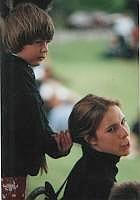| ESE504 : The Class : Adolescence : Guidelines | |||||
 |
Guidelinesfor the Observationof Youngsters |
To complete this assignment successfully, you should:
- Enter your response(s) in the space(s) provided
- Fill in your Name and Email address
- Send the Assignment
Ethical Guidelines for Research
Before we begin the application portion of the work, it is critical to review how we honor students and protect the rights of those we observe or work with.
- In most cases, researchers must have their study reviewed by a human sciences review board. If this is not possible, have an outside observer or third party look at the ideas and provide feedback.
- No physical or psychological harm should occur as a result of a procedure. The benefits of a study must be weighed against the possibility that inadvertent side effects may occur.
- If participants are under the age of 18, parents, guardians or other responsible parties must be notified and given written consent prior to any procedure. In the case of children with developmental delays, the age may extend to 22 or indefinitely. Current ethical guidelines prohibit even using a photo of DD youngsters without consent.
- If the participant is old enough to understand the procedures, they must be informed and provide verbal consent. They must clearly understand that they can withdraw at any time and care taken to prevent a feeling of obligation to continue.
- All information about an individual must be kept confidential.
- An exception to confidentiality is the requirement to alert others if it is determined that a child is engaged in something that is a danger to self or others, including drug or substance abuse, potential for violence or suicide. This is also true if the child is receiving abuse at the hands of others.
- Each participant has a right to the results of the research.
- Each child has the right to receive any potential benefits as a result of the study. Thus, if a blind study to determine the effectiveness of a treatment on ADHD determines that the treatment is good, those in the control group must be given an option to receive the benefits of treatment at the conclusion of the study.
Develop a set of guidelines for observation of youngsters. Once you have completed them, send them to the instructor for acceptance. Once accepted, utilize them during your observations.
Guidelines may already exist with respect to observations and children's welfare. Feel free to surf the net or talk with others as you develop your personal set of ideas. Remember that those provided in this reading may be personalized to serve as your own guidelines.
 E-mail J'Anne
Ellsworth at Janne.Ellsworth@nau.edu
E-mail J'Anne
Ellsworth at Janne.Ellsworth@nau.edu

Copyright 1998 Northern Arizona University
ALL RIGHTS RESERVED
Course developed by J'Anne
Ellsworth
![]()